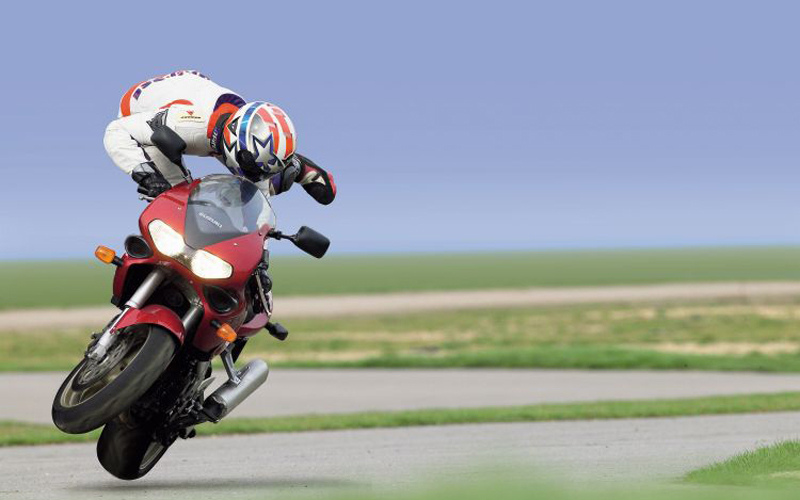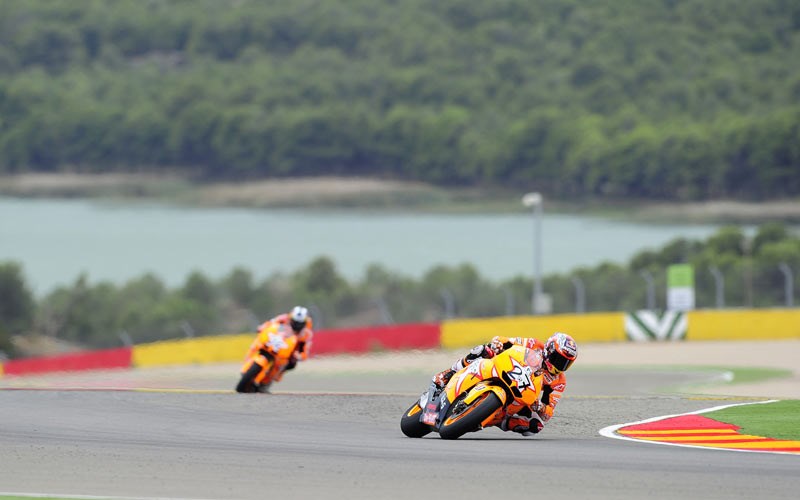
Rear brake caliper– In most motorcycles and scooters we have separate control of the front brake of the rear. And that causes doubts to both novices and experienced riders. Should I use it always? Only when it rains or do we carry a passenger? Better not to use it ever?
When a bike brakes there is a transfer of weight to the front wheel. That’s why the front brakes are always more powerful. Because that wheel is the real responsible for us to stop as soon as possible. In fact. It is not uncommon, more in competition than in normal street use, for the motorcycle to be supported only on the front wheel during braking: at those moments it is very clear that all the weight of the motorcycle and rider is resting on the front tire. But what about the rear wheel? How much does it influence the braking?
The shorter and higher a motorcycle, the less importance the rear wheel will have in braking. Because the higher the forward weight transfer will be. The opposite example makes it very clear: the custom, long and low bikes, mount large disc brakes on the rear wheel and it is not by chance. But because in those bikes the rear brake caliper becomes more important. We can estimate that in them the rear brake can have a 20, up to 30 percent “weight”, when motorcycles higher / shorter can stay at 10 percent. Although, as we will see. The rear brake will greatly influence how braking is, even if it is the front brake that stops the bike at the end.
When a motorcycle assembles a combined brake system. It is the system itself that decides how to distribute the braking between the two wheels. But in most motorcycles and scooters it is the pilot who decides which brake. Or wheel, gives the greatest braking pressure and when. Let’s see different possibilities to understand what the best way to do it is and why the combined systems act as they do.
Rear brake caliper of motorcycle an ideal braking
When driving a motorcycle the driver counts a lot and depending on how he acts, things can change a lot. To slightly step on the rear brake caliper before applying the front brake. Set the rear suspension, so that when braking ahead we will also have some extra weight on that tire, and therefore more grip.
The ideal braking would be, in slow motion, like this: it starts with a gentle touch of the rear brake caliper. And once the bike somewhat lower we would start to apply pressure on the front. As soon as you notice that the front wheel is carrying more weight, we can increase the pressure on the lever to the maximum that it can tolerate the grip at that moment. Losing support to the rear wheel and to the point where it can lose contact with the ground.
It is what we call braking in three times, a first time with the rear and then a braking in two times with the front. In contrast, if you brake hard and suddenly with the front brake it is easy to cause a blockage of that wheel. Without ABS that can be difficult to control and become a fall. With ABS we will be delaying the braking by forcing the system to act. And sometimes when we brake to avoid a risk situation every meter counts …
Entering the curve is easier
When the bike is already tilted, in full swing, the rear brake caliper becomes very important. If we operate it smoothly, by reducing the speed and lowering the rear suspension slightly. It will help to close the turn. The bike will enter better and will stay on the chosen track. It is the opposite effect to the one caused by the front brake: if we braked ahead with the bike tilted. The torque generated between the front tire and the steering tends to close this one. That causes the bike to open the trajectory and in the event it could end in a loss of grip, and fall when “closing the direction”.
If we need to lose more speed in the middle of the curve, the rear brake caliper can only help us to a certain point. If we drive it beyond that necessary softness to help us in the entry of the line. It could block the rear wheel causing a fall due to overseer; with ABS it is more difficult for this to happen. But not impossible if we are inclined enough so that the tire is close to its grip limit.
Passenger and rain
Two situations in which the rear brake caliper takes more relevance than usual are these: when carrying a passenger and when the asphalt is wet or slippery. If we carry a passenger it is evident that the distribution of weights in gear changes drastically when the rider is alone: on the rear wheel the load will have increased significantly. And therefore this brake will be more important when breaking the motorcycle. During braking there will also be a transfer of weight towards the front wheel. And with good grip it would not be impossible for the rear wheel to lose contact with the asphalt. But it would be an extreme case and if normally the stopping power of the rear wheel is around 10 or 20 percent of the total, with a passenger that percentage can double: up to about half the braking will depend on the rear wheel.
In the case of rain or slippery ground, the rear brake caliper helps precisely detect the level of grip available. Even without ABS just cause small blockages of the rear wheel. Driving your brake, to realize what it costs to lose grip. If we just have to do force, is that it slides a lot … The same test would not be safe to do with the front wheel, even with ABS. When we have verified that the firm is as slippery as we feared, we will know that we must drive smoothly. And when braking we will have to do it with more preponderance in the rear, and without applying too much pressure in the front.




